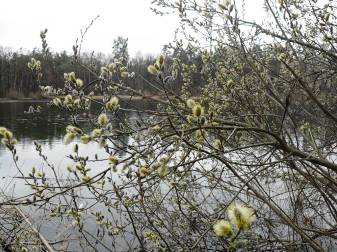



















Willow (Salix), fam. Salicaceae.
This genus has a lot of different species, which are difficult to distinguish. Common willows stand all the winter with semi-open furry buds, ready to bloom from the first April warmth with yellow and green catkins (which are male and female, respectively). Cotton-like fluffy fruits ripen from May (in some species) to autumn (in other, where the fruits are kept on the tree through the winter).
The willow bark (and often also the leaves or buds) are used in a decoction as an antipyretic, astringent, blood-stopping, antiinflammatory, choleretic, diuretic and anthelminthic remedy. As early as in 1828, German professor Johann Buchner isolated the glycoside salicin from the willow bark; this substance transforms easily to salicylic acid. Later, chemists synthesized aspirin, which has analogous effects, but is more convenient in use. Salicylates decrease the blood viscosity and trombosis danger, and also hamper the formation of prostaglandins – the hormone-like substances, promoting inflammation and pain. However, the salicylate overdose can cause stomach irritation, and rarely – the life-threatening Reye's syndrome in children with infections.